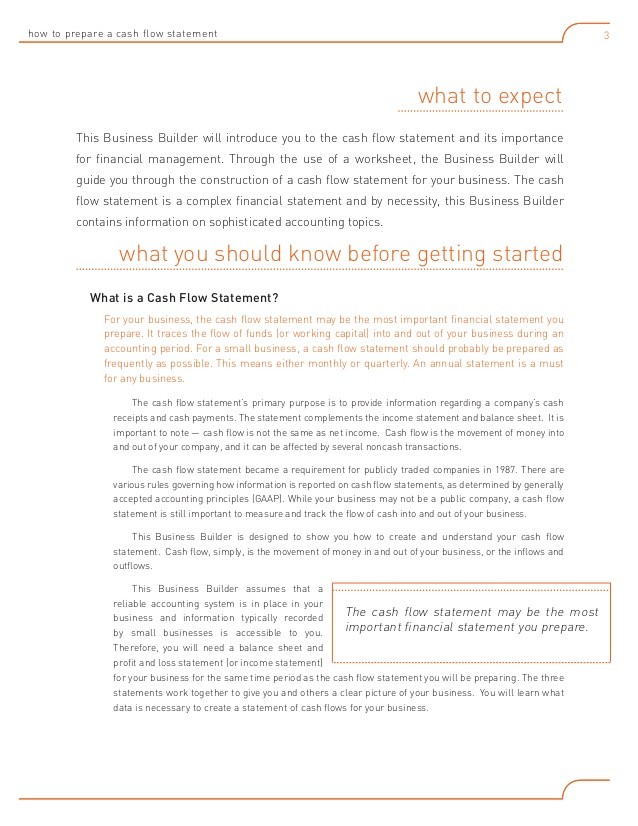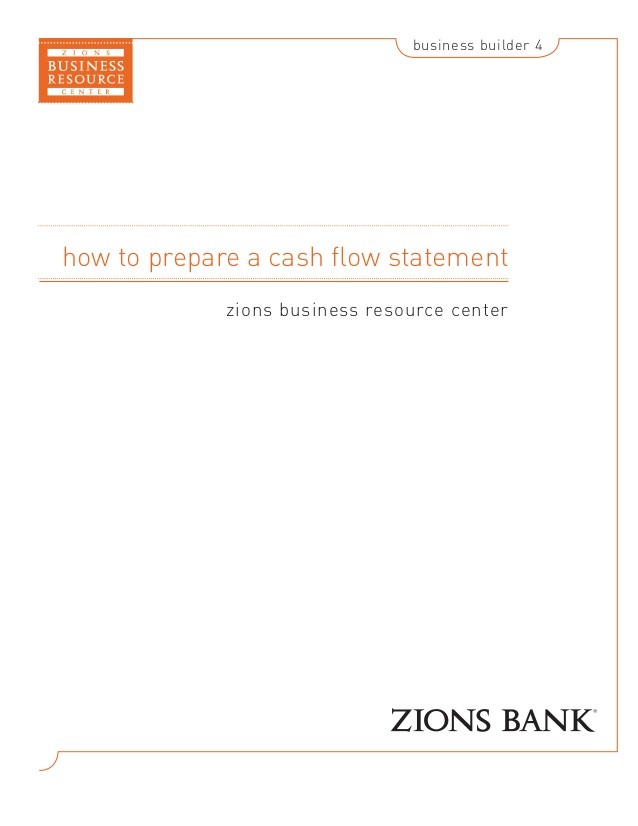The Trade Creditor s Guide to the Statement of Cash Flows
Post on: 22 Апрель, 2015 No Comment

The Trade Creditor’s Guide to the Statement of Cash Flows
The statement of cash flow’s primary purpose is to provide information regarding a company’s cash receipts and cash payments. The statement complements the income statement and balance sheet. When credit decisions are made, many factors must be assessed. The income statement and balance sheet provide information about some of these factors, the cash flow statement provides information about the other factors.
Over the life of a company, total net income and net cash inflow will equal. However, since income determination is based on accrual accounting, income and cash flow will rarely equal in an annual accounting period.
Cash Is King
The importance of cash flow to the short term credit grantor is based on a simple fact, trade obligations are satisfied with cash not profit. It is possible for a firm to be very profitable and not be able to service its obligations. Short-term liquidity can also be achieved by deferring payments of current obligations, however, eventually the company’s ability to generate cash flow through the deferral of payment of current liabilities will be exhausted. This statement is useful for decision making because it provides relevant and reliable information for predicting cash flows.
The cash flow statement is an important analytical tool that the trade creditor can use to determine if a customer is able to generate sufficient cash to meet its trade obligations. The ability of a company to adapt during a period of financial adversity, to obtain financing, and generate adequate amounts of cash for specific purposes are very important factors in the review process. Using the cash flow statement in the credit analysis process can help users evaluate a customer’s solvency, liquidity position, and its financial flexibility.
The significance of the cash flow analysis
The cash flow statement’s importance to the analyst in identifying financially troubled companies is unquestioned. It provides valuable information about the quality of earnings. The higher the correlation between income and cash flow, the higher the earnings quality. The statement also provides insight into how effective the management team is at utilizing available resources and the firms ability to generate cash flows in the future. It provides a picture of where the cash comes from and where it goes.
The statement reports the cash provided and used by the operating, investing, and financing activities of a company during an accounting period. The usefulness of this information has been recognized for many years by statement users. In 1987, the Financial Accounting Standards Board issued Statement No. 95, which requires that a statement of cash flows accompany the income statement, balance sheet and statement of retained earnings.
The statement of cash flows explains the change during the period in cash and cash equivalents. Cash includes currency on hand and demand deposits. Cash equivalents are short-term, highly liquid investments that are readily convertible to cash. Statement No. 95 requires that cash receipts and payments be classified as operating, investing and financing activities. The statement of cash flows must summarize the cash flows so that net cash provided or used by each of the three types of activities is reported. Beginning and ending cash must be reconciled based on the net effect of these activities.
Operating activities
The statement provides information about the cash generated from a company’s primary operating activities. Operating activities relate to a company’s primary revenue-generating activities, and cash flows from operating activities are the cash effects of transactions and economic events included in the determination of income. Operating activities that generate cash inflows include customer collections from sales of their primary products or services, receipts of interest and dividends and other operating cash receipts. Operating activities that create cash outflows include payments to suppliers, payments to employees, interest payments, payment of income taxes and other operating cash payments.
Investing activities
Investing activities include lending money and collecting on those loans, buying and selling productive assets that are expected to generate revenues over long periods, and buying and selling securities not classified as cash equivalents. Cash inflows generated by investing activities include sales of long-lived assets such as property, plant, and equipment, sales of debt or equity instruments and the collection of loans.
Financing activities
Financing activities include borrowing and repaying money from creditors, obtaining resources from owners and providing both a return on their investment and a return of their investment. The return on investment is provided in the form of dividends.

The statement of cash flows provides information about how the company invests its cash on equipment and other long term investments, and the cash provided if it disposes of fixed assets. If the firm uses debt or equity to expand its operations, it is disclosed in the financing activities. Also, if the firm uses cash to retire debt, it appears in the statement.
Income flows and cash flows
The income statement and balance sheet are based on accrual accounting which was developed based on the concept of matching. The matching principle states that revenues generated and the expenses incurred to generate those revenues should be reported in the same income statement. This emphasizes the cause-and-effect association between revenue and expense. Many revenues and expenses result from accruals and allocations that do not affect cash. A company can operate at a profit and continually be short of cash. It can also generate huge inflows of cash from operations and still report a loss. The statement of cash flows can explain how these situations might occur. Answers to these questions cannot be found in the other financial statements.
Since net income is based on accrual accounting, income and cash flows are rarely equal in short time periods. A company may operate for several years because its cash inflows exceed its required cash payments, even though the company may not be profitable in the long run.
There are two classes of items that cause differences between income flows and cash flows: items that appear on the income statement that do not represent inflows and outflows of cash, such as depreciation, or items whose cash effects do not relate to operating activities, such as gains on the sale of depreciable assets; and operating cash inflows and outflows that do not appear on the income statement, that must be reported on the statement of cash flows. For example a company may collect in the current period cash arising from credit sales made in a previous period.
Preparing the Statement of Cash Flows
Information used to prepare this statement is obtained from the income statement for the year and comparative balance sheets for the last two years. Net income is adjusted for deferrals and accruals. The purpose of these adjustments is to convert the accrual basis income statement to cash flows.
As discussed earlier, the statement follows an activity format and is divided into three sections: operating, investing and financing activities. There are two methods of calculating and reporting the net cash flow from operating activities. The direct method reports gross cash inflows and gross outflows from operating activities. The indirect method reconciles net income with net cash flow from operating activities by adjusting net income for deferrals, accruals, and items that effect investing and financing cash flows. Both indirect and direct methods yield identical figures for net cash flow from operating activities because the underlying accounting concepts are the same.














